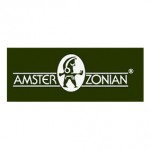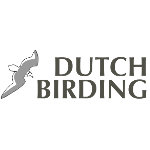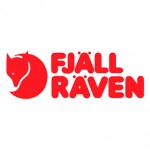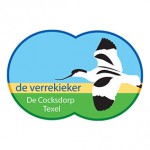Arjan's Biggest Year
In 2016 I will attempt the ultimate in global birding, to break the world record in birdwatching, this involves observing more than 6000 species in a single year!
Like my predecessor Noah Strycker I will count heard-only birds, but I will differentiate between heard-only- and seen species to make sure my list stays comparable.
During my 'Biggest Year' I will raise money for the groundbreaking Birdlife Preventing Extinctions Programme in a collaboration with Vogelbescherming Nederland and the Dutch Birding Association. This programme aims to prevent the extinction of all globally threatened bird species by applying an active, innovative and highly effective methodology.
Arjan's Biggest Year is supported by:
March 19 - 24
27 maart 2016 · Arjan Dwarshuis · 5961 × bekeken
March 19th TOUCH DOWN IN AUSTRALIA
For the first time during this big year I was able to get some proper birding dawn in two different countries on the very same day, all thanks to my friend Gavin Goodyear who was waiting for me right as I stepped out of the arrival hall after my flight from PNG!
Gavin was not messing around and drove me straight up to a stakeout for my most wanted bird in Southern Queensland, the Spotted Quail-Thrush. We had only half an hour of daylight left, but this quick trip could save us a run-around in the morning.
An unexpected highlight was a kind of marsupial mouse - I have to ask Gavin for the name again - tucked away under some discarded construction material, what an awesome little creature!
Gavin's hearing proved to be spot-on as he heard a Quail-Thrush calling and moments later I spotted a pair foraging in the undergrowth, an absolutely amazing sighting.
Next up we drove to a site for Greater Sooty Owl up in the rainforest and moments after our arrival in the dark we had a calling bird right over our heads. While driving back into Brisbane I experienced another highlight and true bucket list moment when I spotlighted a Koala high up in a eucalyptus tree! After that thrilling sighting Gavin dropped me off at his parent's place where there was a really soft bed, a hot shower and a cup of tea waiting for me. What a great start to the Australia leg of my Biggest Year.
March 20th BIG DAYIN', GONNA LOVE IT!
Gavin picked me up at 4:15 AM, since we had a long day ahead of us so we had no time to waste!
We first drove to a stakeout for Powerful Owl, but these mighty owls were not home. Next, we drove up into the rainforest where we picked up about everything possible in about an hour, one of those true Biggest Year moments: Australian Logrunner, Regent- and Satin Bowerbird, Rose-crowned Fruit-Dove, Paradise Riflebird, Australian King Parrot, Wonga Pigeon, Shining Bronzed Cuckoo and Green Catbird were all added in quick succession.
After all that power birding we drove east towards the dryer plains, but not before we worked our way through some Eucalyptus forest where we found the sometimes difficult to find Red-browed Treecreeper, the stunning Eastern Spinebill and the bizarre Topknot Pigeon.
As soon as we hit the drier plains east of Brisbane, new birds started to pour in again. A quick stop for raptors proved productive with an unexpected Black Falcon.
Hoary-headed Grebe, Red-capped Plover and Blue-billed Duck were welcome additions to the list around a large body of water and I was very pleased to finally see Cockatiel in the wild. Many of those familiar cage birds in the Netherlands are actually difficult to find Australian Outback specialties.
One of the best birds around these dry plains were three stunning Banded Lapwings, a rare shorebird I was very happy to see, luckily Gavin had found these nomadic waders one week prior to my arrival.
Next we drove back all the way to the coast - on the way picking up an unexpected Square-tailed Kite - to look for some coastal specialties, kicking off with two stunning Beach Stone-Curlews and the range restricted Mangrove Honeyeater, Mangrove Gerygone and the soon-to-be-split Torresian Kingfisher.
Our last ticks for the day were a stakeout Southern Boobook and Fuscous Honeyeater before I had to check-in for my 8 PM flight to Cairns. We clocked out with no fewer than 88 new species, making this my third most productive day so far and all of this thanks to Gavin Goodyear, one of the best birders I had the pleasure of birding with this Biggest Year!
March 21th CASSOWARIES IN THE BIRD BATH!!
Last evening Phil Gregory picked me up from Cairns Airport. For the next two days I would stay with Sue and Phil - the owners of Sicklebill Safaris and Cassowary Tours - in their wonderful 'Cassowary House', a magical place surrounded by beautiful rainforest where Riflebirds, Catbirds and Cassowaries come to the veranda.
We had a relaxing start birding around the driveway. Phil is an amazing naturalist and birdwatcher that knows literally every birdcall in northern Australia as well as PNG - he is currently finishing his long awaited field guide to the birds of New Guinea - so it was a true pleasure birding with the legend himself. Also along for the ride was June, one of Sickebill Safaris' best guides, so I was in capable hands!
We connected with a load of northeast Queensland specialties like Victoria's Riflebird, Spotted Catbird, Spectacled Monarch, Yellow-breasted Boatbill and Noisy Pitta.
While having breakfast on the veranda of Cassowary House Phil whistled in a Pied Monarch, amazing! After breakfast we drove down to the Cairns esplanade where the first bird we saw was a Red-tailed Black Cockatoo. Other specialties here were Varied Honeyeater and Mangrove Robin.
Later in the morning we found a pair of the stunning Crimson Finch and the localized Lovely Fairywren. Suddenly Phil's phone rang, it was Sue: 'There's a male Cassowary with chick in the garden'! We quickly drove back to Cassowary House where indeed a huge adult male Cassowary and its chick were having a drink from the bird bath. In Holland we have Blackbirds and Robins coming to drink, in northeast Queensland they have the most awesome dinosaur-like beast in the world dropping by for a drink. I marvelled at this amazing sight for a while, there truly is nothing like a Cassowary, even the breeding ecology of this endangered species is weird, with the smaller male doing all the parenting.
After lunch we drove east to the drier savannah. Against all odds we found a pair of the rare and unpredictable Black-throated Finch while a stunning male Red-winged Parrot flew overhead.
One of my most wanted Australian birds was the Squatter Pigeon, normally a very tough species to connect with, but not this time! We had no less than 10 birds feeding at arm's length, what a difference from birding in PNG!
Our last bird of the day was the uncommon White-browed Robin that June brilliantly picked out by call.
When we arrived back at Cassowary House Sue had prepared a delicious diner on the veranda. A cold beer in my hand, the sounds of the rainforest around us and thrilling accounts of expeditions into remote areas in PNG. What a fantastic place!
March 22th FROM TINY FERNWRENS TO GIGANTIC BUSTARDS
Before breakfast we connected with a stunning White-eared Monarch perched high up in the canopy, now the only thing missing here was Lesser Sooty Owl, which I would try tonight. For now we drove up Mt. Lewis - en route picking up Grey-crowned Babbler - to look for all the Atherton Tableland endemics, 8 species restricted to a tiny spec of wet rainforest in northeast Queensland.
The trail on the top of Mt. Lewis was very rewarding and we found all the endemics in about half an hour, from the utterly bizarre Tooth-billed Bowerbird to the ground-dwelling Fernwren and Chowchilla. However we failed to find Golden Bowerbird, a species that can be notoriously difficult outside the breeding season.
We were starting to run out of species by now, but there were three big targets still lined up for me. The first of these was the huge Australian Bustard, we found four of these fantastic birds - proving some ancient linkage between the Indian, African and Australian avifaunas - in a roadside field.
Next we looked for the Apostlebird, one of only two species belonging to an endemic Australian bird family. We had no trouble finding these bizarre looking Coucal-like passerines which meant that I could add a new bird family to my list.
My last new species for the day was a pair of roosting Tawny Frogmouths, the 11th and last possible member of this amazing family this Biggest Year! Frogmouths must be one of my ultimate favourites.
Like yesterday Sue had prepared an amazing dinner and I thoroughly enjoyed my last evening at Cassowary House, despite my failed attempt to find any Lesser Sooty Owls (a full moon made owling next to impossible, a recurring phenomenon this Biggest Year).
March 23th IN THE FOOTSTEPS OF ABEL TASMAN
Phil dropped me off at Cairns airport for my 5:30 flight via Brisbane to Hobart, Tasmania. That's how a big year works, one morning you're in tropical northeast Queensland and a couple of hours later you step out of the plane to find yourself in the mild temperate climate of Tasmania.
At the airport of Hobart I was greeted by Els Wakefield, a Dutch lady and avid birdwatcher, who moved to this remote place at the age of 1. How cool to go birding with a Dutch Birder on an island that was long ago discovered by the great Dutch explorer Abel Tasman.
Besides a pair of razor-sharp eyes, Els brought licorish, stroopwafels, Rondo's and pepermunt with her to make sure I felt right at home on this beautiful island.
No time to waste! It was already 1PM and I had just 1,5 days on Tassie to connect with all 12 endemics and a bunch of other specialties.
After seeing my first Pacific Gulls and Musk Ducks, we drove straight to a nesting site for the utterly amazing Hooded Plover, one of my most wanted shorebirds. Luckily finding these stunning black-and-white birds was straightforward and one hour after touch down on Tasmania I was admiring Hoodies through the scope.
Then we drove to the Southeast coast to look for Cape Barren Goose and have a seawatch from the windswept cliffs. En route we stumbled upon one of the most amazing animals I had ever seen, an Echidna, a bizarre egg-laying marsupial that superficially looks like a long-nosed Hedgehog. It was almost impossible to drag me away from this creature that allowed extreme close-up views. Wow, nature is just full of surprises.
Actually, today could have been a mammal bonanza, but very sadly most of the amazing Tasmanian mammals we saw today laid dead on the roadside. We found Wombats, Qualls and Possums, beautiful marsupials that died because of useless speeding. How incredibly dreadful.
The seawatch was unexpectedly productive with an albatross galore. In an hour we counted about 200 Buller's and 50 Shy Albatrosses, along with hundreds of Short-tailed Shearwaters!
We spend looking for Tasmanian Masked Owl till 11 PM, but the bright full moon meant nothing called. We did see several Buttongs, bizarre kangaroo-like marsupials.
March 24th TOURING TASSIE
After serving me an absolutely delicious homemade breakfast, Els took me to the top of Mt. Wellington from where we had spectacular views as the sun rose over Tasmania, a true sight to behold.
Then began the hunt for Tasmanian endemics. We quickly connected with Scrubtit and Tasmanian Scrub-wren and at the Waterworks we found the non-endemic, but nevertheless stunning Beautiful Firetail. Another highlight was an all-white Grey Goshawk. You might wonder why a bird of prey has an all-white plumage in an environment where snow hardly ever occurs. Well this bird uses mimicry to stalk its prey, with its snowy-white plumage it can fly undetected with a flock of Sulphur-crested Cockatoos to stalk its prey. How brilliant is that?!
By lunch we had found all but one of the endemics, the endangered Forty-spotted Pardalot an exquisite little bird with - you guessed it - 20 white spots on each wing still missing. It took a long search, but finally we had fantastic views of this tiny bird that has undergone an alarming decline due to nest predation by the introduced Sugar Glider (a kind of marsupial reminiscent of a flying squirrel).
After this great run and a scallop-lunch at the Hobart harbour front, Els drove me to the airport where I boarded my flight to Melbourne where Philip Peel and two birding buddies (Tim & Tim) were waiting for me. Tomorrow I will go out big daying again, starting with some night birds just after midnight...
Arjan Dwarshuis
Discussie
Gebruikers van het forum gaan akkoord met de forumregels.


























